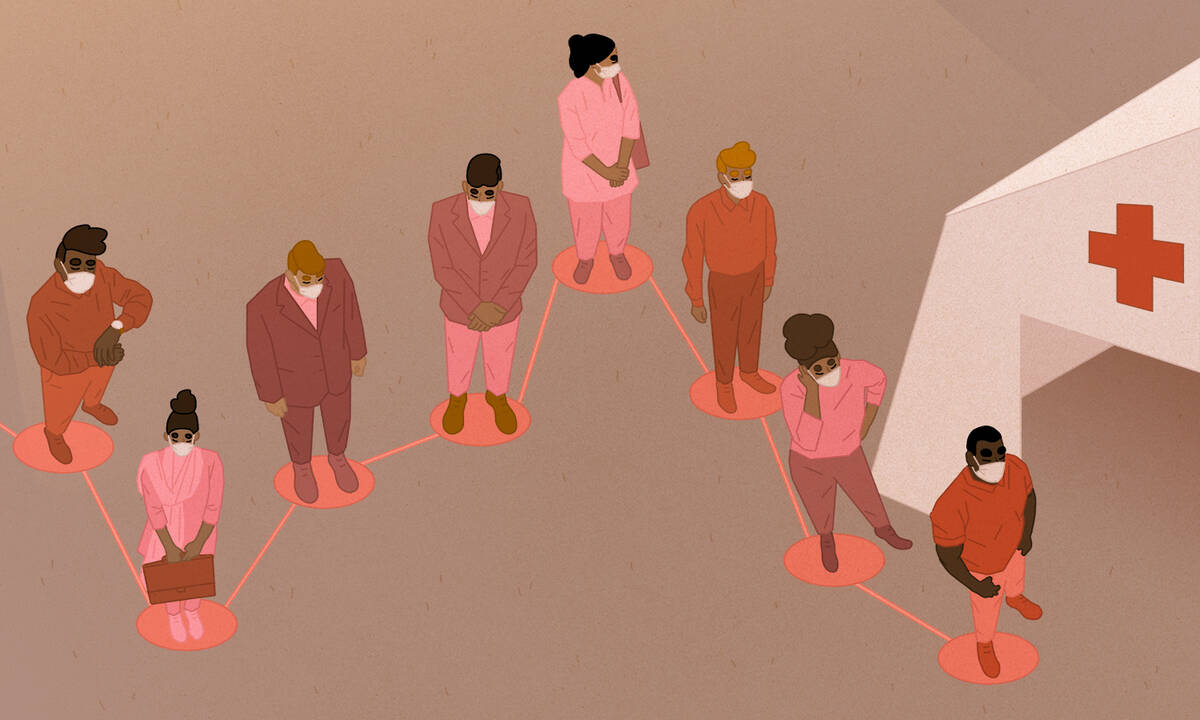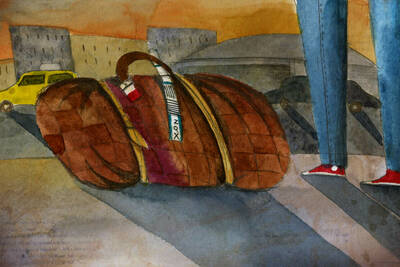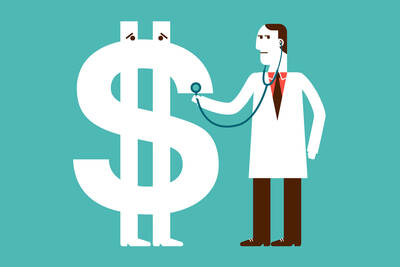Many policymakers, including President Trump, are banking on widespread Covid-19 testing as the key to resuming economic activity without exacerbating the spread of the virus.
But will testing have the desired effect? And what would the ideal testing policy look like? In a new study, Kellogg’s Sergio Rebelo, together with Northwestern economics professor Martin S. Eichenbaum and Mathias Trabandt of Freie Universität Berlin, develops an economic model to answer these questions.
Their surprising finding is that COVID-19 testing by itself will not allow the economy to reopen safely. The researchers conclude that if the U.S. increases testing without requiring the infected to quarantine, the country will experience a more severe recession—and thousands more deaths—than if it did no testing at all.
The reason: once someone knows they are infected, they no longer need to worry about catching the virus, so infected people with mild symptoms may feel emboldened to go work and shop freely. “I don’t pay a price for it,” Rebelo explains, “so I end up going out and infect other people.” While this behavior may seem cold-hearted, Rebelo says it’s likely a realistic reflection of how people may act, especially as financial pressures make many people eager to return to work.
However, when robust testing is paired with quarantining of those infected, outcomes improve drastically. The researchers simulate what would happen under a “smart containment” policy in which larger and larger swaths of the country are tested every week, and the government provides the infected with income and basic necessities, so that they can stop working and shopping. Such a policy results in huge benefits: assuming that every week an additional 2 percent of the U.S. population was tested, and that the infected were then put into quarantine, a quarter of a million lives would be saved compared to a baseline where the government didn’t intervene. The resulting recession would also be much smaller.
This outcome would be a major improvement over the results of blunt containment measures like lockdowns currently being used, which force policymakers to choose between saving lives and keeping the economy going. “With smart containment, you can get better health outcomes and a smaller recession,” Rebelo explains.
No doubt, ramping up testing so dramatically would present an enormous logistical challenge. And the authors acknowledge that providing money and supplies to infected people so that they don’t need to venture out—a key component of smart containment—would be expensive.
But Rebelo stresses that once you account for the reduction in the severity of the recession and the lives saved, the net benefits of the policy drastically exceed its costs. “It will cost billions, but it will save trillions.”
Why Ramping Up Testing Can Lead to More Deaths and a Worse Recession
The study builds on earlier research that Rebelo, a professor of finance, conducted with the same collaborators. In the earlier study, the researchers concluded that government interventions to reduce the spread of the virus would save millions of lives but lead to a worse recession. “And that’s what we’ve seen happening all over the world,” Rebelo says.
However, those predictions did not account for the possibility that people may get tested for the virus and adjust their behavior depending on the results. In the present study, the researchers simulate what would happen under different scenarios involving large-scale COVID-19 testing.
The optimal containment policy “will cost billions, but it will save trillions.”
In the first scenario, everyone in the population gets tested. They find that this would lead to more deaths, less consumption, and a larger drop in employment than had there been no testing at all.
What explains this counterintuitive finding? As Rebelo explains, in a society without testing, nobody knows their health status for certain, so everyone reduces their work and shopping dramatically in order to limit their exposure, just in case they’re susceptible to infection. However, once people know their health status, they react differently. Infected individuals who know that they are already infected now have little to lose by going out to work or shop. Thus, they go out more often, spreading the virus as they do so, and causing more infections and deaths. As a result, working or shopping becomes more risky for those who are not yet infected. So these individuals decide to work and shop even less, which exacerbates the recession.
This model relies on the assumption that people act selfishly and will choose to go work and shop even when they know that they are shedding the virus. “We use that assumption not because we like it, but because we think it’s a better description of the world than assuming that people are very altruistic,” Rebelo explains. While some infected people would surely stay home, he thinks it’s realistic to assume that many would resume their normal shopping and work behaviors as soon as possible—especially given how many households are struggling financially due to the crisis.
“If my income was cut to zero, I’m now living from my meager savings and perhaps some help from my family,” he says. “So at some point, even though I might still be sick, I probably feel like I have to go to work.”
A Smart Containment Policy Saves Lives and Reduces Economic Costs
Next, the researchers consider what would happen under a “smart containment” policy.
Under this policy, some percentage of the population—2 percent, in the scenario they model—is tested in the first week. In the second week, that same 2 percent are tested again, plus an additional 2 percent of those not yet tested—and so on. “So this scheme ramps up to a very large number of tests,” Rebelo says, with 38 percent of the population being regularly tested by the end of the first year. (People who recover or die no longer need to be tested, which is why this figure is less than 100 percent.)
However, smart containment doesn’t stop with testing: those who test positive for the virus are also forced to stay home and avoid shopping (although they may continue noneconomic social interactions, such as walking outside or visiting friends). So in the model, the government steps in to provide infected individuals with the goods and income they cannot procure themselves, financed through taxes.
The researchers find that this policy would not only result in fewer infections and deaths, but also lead to a smaller economic downturn. “Because the risk of infection is smaller, uninfected people are more likely to go to work, they’re more likely to go shopping, they’re more likely to go to restaurants, and so forth,” Rebelo explains.
Smart containment would be expensive, since the government would have to finance hundreds of millions of tests, and also pay sick people to stay home. But given the benefits, the researchers expect that the policy would more than pay for itself.
Compared to no testing, smart containment reduces the size of the resulting recession by half, and saves some 0.07 percent of the population from dying—in the U.S., that would be roughly a quarter million people. The federal government pegs the statistical cost of a lost life at $9.3 million, a number derived from extensive economic research looking at how much additional compensation people demand to take on potentially life-threatening jobs (under the assumption that that difference is the economic value we place on a lost life).
Once you account for the reduced recession and the value of so many lives saved, the benefits exceed even the high costs of the policy.
“This is a war with the virus, but we don’t have an army to fight it. So I think this is a very good strategy for the next campaign, until we get a vaccine.”
And since this policy allows the virus to keep spreading at low rates, it would eventually lead to herd immunity, meaning that enough of the population achieves immunity that the disease ceases to spread. The researchers predict that herd immunity would be achieved after a year of smart containment. “And that means you can stop testing,” Rebelo says.
Yet the researchers find that large positive benefits of smart containment persist even if those exposed to COVID-19 don’t acquire permanent immunity, which some evidence suggests may be the case. Without any enforced quarantines, the lack of permanent immunity would lead to resurgences or “echoes” of the virus, as formerly immune people contract it again.
But so long as governments continue robust testing and quarantines, these echoes will remain very small. “A great benefit of smart containment is that it shrinks the initial burst of infections and also eliminates the echoes,” Rebelo says.
Stricter Containment Leads to Better Outcomes, But No Herd Immunity
Smart containment would curtail social interaction for the infected, but not eliminate it entirely. “With smart containment, if I’m infected I cannot go to work or go shopping but I can still ride in elevators or go to the park, for example,” Rebelo explains.
So would an even more intensive quarantine for the infected produce even larger benefits?
In their final scenario, the researchers consider a more stringent type of quarantine, referred to as “strict containment,” wherein the infected are prohibited from any social interaction. “With strict containment, if I’m infected, I go to a special place as long as I’m sick, and cannot leave,” Rebelo explains. “I don’t go to the park. I don’t touch elevator buttons.”
While this type of quarantine may seem impractical, Rebelo notes that a similar policy has already been enacted in parts of Asia, with some governments forcing infected individuals—even those with mild symptoms—to quarantine in designated facilities where they can be monitored.
The researchers find that such a strict policy should lead to better health and economic outcomes than smart containment. “With strict containment, we have a very mild recession and a very low death toll,” Rebelo says.
Yet this best-case scenario comes at a cost: because the virus is so well-contained, much of the population never has exposure to the virus, meaning that herd immunity is never attained.
“So you just have to keep doing this mega-testing until a vaccine can be produced,” Rebelo explains.
A Powerful Strategy in the Fight Against the Virus
What do these findings suggest about the optimal way to combat coronavirus?
First, Rebelo notes that smart containment would mark a major improvement over the blunt containment measures like lockdowns currently being used, which incur severe economic costs in order to save lives. After all, the moment these costly measures are lifted, there will be a second round of infections. “And then if the healthcare system looks like it’s going to be overwhelmed, we’re going to have a second clampdown,” he says.
Smart containment, on the other hand, would limit the spread and the costs of the virus while still producing herd immunity, meaning that the policy could eventually be safely lifted.
Second, “the results are much better if you start early on,” Rebelo says, so governments would be wise to implement smart containment soon.
Of course, this policy would require a great deal of testing. The 2 percent scenario that the researchers examine would mean testing an additional 7 million people per week in the U.S. This would surely pose a challenge, given that states are struggling to increase their testing capacity. But once such intensive testing becomes possible, it will not need to go on indefinitely, since herd immunity would be achieved after a year.
Despite its cost and ambitious testing regime, Rebelo argues that smart containment may still be policymakers’ best option.
“This is a war with the virus, but we don’t have an army to fight it,” he says. “So I think this is a very good strategy for the next campaign, until we get a vaccine.”
Featured Faculty
Charles Moskos Professor of Economics, Weinberg College of Arts & Sciences; Co-Director, Center of International Macroeconomics (CIM); Professor of Executive MBA (Courtesy)
MUFG Bank Distinguished Professor of International Finance; Professor of Finance
About the Writer
Jake J. Smith is a research editor at Kellogg Insight.
About the Research
Eichenbaum, Martin S., Sergio Rebelo, and Mathias Trabandt. "The Macroeconomics of Testing and Quarantining." Working paper.
Read the original




